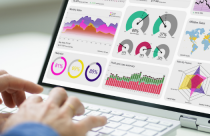How to Write a Data Management Plan During Grant Application

This article is also available in: Russian, Portuguese, Turkish, and Spanish
Along with other essential requisites of a grant application, funders are increasingly mandating applicants to submit data management plan (DMP). A funding proposal can be considered as a preliminary outline plan for a comprehensive data management plan.
According to European Commission Horizon 2020, project data must be made openly available to promote data sharing and ethical stewardship of data by researchers.
What is Data Management Plan?
Data management plan is a detailed supplementary document that explains the reason for selecting particular formats, approaches, standards, and methodologies of your project. Despite being a detailed document, it must not be longer than two pages. The main purpose of a data management plan is to describe the kinds of produced data, its management, and its availability and accessibility to other researchers.
Ideally, a data management plan must answer the following questions:
- What kinds of data does your research produce?
- How will the data be collected or created?
- Who is responsible for data ownership?
- What standards and formats will be used for data and metadata?
- What are the policies and restrictions that exist for accessing and sharing data?
- How do you plan to archive and preserve data, samples and other research products?
Why is it Important to Create a Data Management Plan?
To begin with, creating a data management plan is so important that some funding agencies do not accept proposals that does not include it. Moreover, a proposal must include a DMP even if no data are produced.
Furthermore, a data management plan is important because of the following reasons:
- It increases impact and discoverability of your research with data citations that it gets.
- A DMP provides evidence for your research in relation with already published results.
- It ensures copyright and ethical compliance.
- It also helps in archiving and preserving data for long-term.
- Most importantly, it enables you to share your data with other researchers and benefit interdisciplinary research.
What are the Elements of a Data Management Plan?
It is imperative to generate a data management plan that supports reuse of data beyond the project’s life. While there isn’t an official template to create a DMP, grant applicants must address the key elements mentioned below:
1. Data Description
It is a brief description of the gathered information. This section must include the amount of data to be produced, its nature, and kind of data that is expected to be generated and collected during the course of project. Types of data to include in this section are text, curriculum materials, spreadsheets, images, 3D models, software, audio files, video files, field observation reports, surveys, assessment records, etc. Lastly, and most importantly, you must cite and give due credit while integrating data that has been already published by others.
2. Metadata and Format
This section includes description of the format of your data and how it will be created, collated, maintained, and delivered. Furthermore, it includes a justification for all procedural and archival appropriateness of formats. The purpose of this section is to deliver understandable results to other researchers. Additionally, you must include steps taken to comply with experimental procedures of your project.
3. Archiving and Preservation
The archiving and preservation section discusses long-term strategy for maintaining, curating, and archiving the data. It must include storage methods, backup procedures and resources to retrieve research data. You must address where your data will be deposited (name the archive, repository, or database). Additionally, mention procedures that your intended long-term storage site must preserve. It is also essential to state the retention period of data that will be available to access beyond the life of the project.
4. Security, Access, and Sharing
This section describes technical and procedural protections for information, including confidential information, and how permissions, restrictions, etc. will be enforced. In addition, you must include how and when the data will be available to access. You must address following issues in this section:
- Resources required to make the data available.
- Process for gaining access to the data.
- Whether the data will be chargeable or not.
- The duration for which the principal investigator retains the right to use data before it is available for mass distribution.
- Details related to hindrance caused due to commercial, patent, or political reasons.
- List of federal and funding requirements for data sharing and management.
5. Ethics and Privacy
The ethics and privacy section of a data management plan discusses how do the applicants plan to handle informed consent and how will the privacy of such data be protected. It must include all arrangements such as protection of participant confidentiality or other ethical issues that may arise.
6. Intellectual Property Rights
Information of individuals or entities that hold the intellectual property rights to the data must be included in this section. Likewise, measures to protect these IP rights and copyright constraints must be noted clearly.
7. Roles and Responsibility
Naming individuals responsible for data management is crucial in a data management plan. These individuals must have a significant role and must be responsible for managing data during the project, with information about version control, naming conventions, etc.
8. Budget
The budget section of a data management plan must not be confused with that of a grant proposal. This one includes costs of preparing data and documentation for archiving.
How to Write a Data Management Plan?
- Use standard or widely adopted formats for easy sharing and storage.
- Check preferred formats while depositing your data in discipline or institutional archives.
- Do not forget to state the expected data outputs.
- Mention the volume, type, content, quality, and format of the final dataset.
- Outline the metadata and documentation to make the data easily comprehendible.
- State the standards and methodologies used to collate and manage data.
- Give credit to persisting data while pointing out its relation to your data.
- All collaborative proposals or sub-awards are treated as a unified project. Hence, they must be combined in a single data management plan.
Although a supplementary document, we know that data management plan can have a strong impact on the acceptance of your grant proposal. Did this help you in understanding the nuances of writing a data management plan? How have you been structuring your DMPs? Let us know in the comments section below! You can also visit our Q&A forum for frequently asked questions related to different aspects of research writing and publishing answered by our team that comprises subject-matter experts, eminent researchers, and publication experts.









